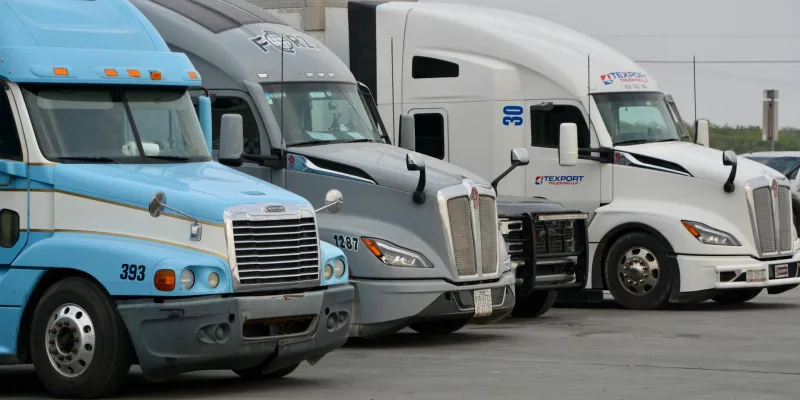Truck Manufacturers Ordered to Pay Damages of 10% in Landmark Norwegian Ruling
November 26, 2025
Following the European Commission’s 2016 and 2017 infringement decisions against the trucks cartel, several national courts across Europe, notably in the UK, Germany, the Netherlands, Spain and Portugal, have heard follow-on claims against the cartel members. A recent ruling from the Borgarting Court of Appeal in Norway stands out with respect to both the scope and complexity of the evidence presented and the duration of the oral hearing.
Posten Bring, a state-owned postal and logistics group, originally filed its claim in 2017 against MAN, DAF, Daimler, Iveco and Volvo/Renault. Scania subsequently intervened in the matter on behalf of the defendants. Each of the defendants, as well as Scania and Posten, appointed separate teams of economic experts to assess the cartel’s potential effect on truck sales prices. During the course of 34 days, the court heard expert testimony from a total of 18 economic experts.
The panel comprised three legal judges and two expert judges. The proceedings also involved extensive documentary evidence, including evidence from the European Commission’s case file, the Statement of Objections and confidential versions of the 2016 and 2017 infringement decisions.
The appeals court concluded that the trucks cartel had led to an overcharge of 10% of the chassis value of trucks purchased by Posten in Norway. For trucks purchased by subsidiaries in Sweden and Slovakia, the appeals court set the overcharge at 5%.
The judgment is now final, as Norway’s Supreme Court recently declined to hear the defendants’ appeals. Following this decision, a second trucks damages claim has been settled in Norway.
This post summarises the appeals court’s reasoning on causation and the existence of harm, along with some key takeaways from the judgment.
The trucks cartel went well beyond information exchange
One of the truck manufacturers’ key arguments was that the infringement merely amounted to “information exchange” and that it had not had any actual effect on sales prices. Although the truck manufacturers accepted that their conduct constituted an object infringement under Article 101 TFEU, they contended that this was nonetheless a “new” and less serious form of infringement distinct from hard-core cartels, and that it should not therefore be treated with the same severity.
The appeals court disagreed and observed that the cartel "was more extensive and of a more serious nature than the producers had admitted" and that it had affected end-user prices by facilitating price coordination, not simply information exchange. It is clear from the judgment that the appeals court’s assessment was informed by details on the operation of the cartel, including from the Commission's Statement of Objections, a confidential version of the settlement decision and confidential versions of the Scania decision and the Scania judgments from the General Court and the ECJ, as well as evidence from the Commission's case file.
Based on the available evidence, the appeals court concluded that the truck manufacturers’ collusion involved a systematic, long-term cooperation from 1997 to 2011. The manufacturers not only shared gross list prices, but also regularly discussed and coordinated gross price increases, as well as the timing and pass-on of costs for implementing new emission standards, with mutual expectations to keep market prices high. This collusive conduct, regularly reinforced through meetings, emails and mutual access to pricing tools, affected the entire EEA truck market and was designed to ensure higher end-user prices than what would have existed under normal competition.
The details on the infringement provided both direct evidentiary value by offering a detailed, chronological account of cartel contacts, and served as a foundation for establishing the relevance of other evidence, including economic theory and meta-studies on cartel effects. The appeals court concluded that this evidence supported the finding that the trucks cartel had indeed elevated the prices.
No econometric analysis provided definitive evidence on the level of overcharge
The appeals court devoted considerable attention to the “battle of the experts” over regression analyses, acknowledging both their central role in cartel damages claims and their inherent limitations. Professors Steen and Hyytinen, experts engaged by Posten, relied on Posten’s own purchase data in Norway and found significant overcharges of 20–30%. In contrast, the manufacturers’ experts, using the truck producers’ own datasets and internal cost models, concluded there was little or no overcharge, or even a “negative overcharge”.
In total, the parties submitted 11 expert reports to the appeals court. These were in addition to the 16 reports previously submitted to the District Court.
Although presented with many in-depth analyses, the appeals court nonetheless noted that all regression models relied on simplifications, assumptions and choices regarding data and variables, resulting in widely divergent outcomes. Notably, the appeals court echoed the UK Competition Appeal Tribunal (CAT) in the Royal Mail case cautioning against “spurious accuracy”. No single regression analysis provided a definitive answer. While the claimants’ analyses were limited by relatively small sample sizes and reliance on only Posten’s transactions, the appeals court was concerned that the manufacturers’ models relied heavily on their own internal cost data and self-selected transaction samples, without demonstrating that these datasets were representative of market-wide pricing. The appeals court also questioned the treatment of endogeneity, noting that some cost variables used by the manufacturers, such as internal costs, carried a risk of being influenced by the cartel conduct itself, thereby undermining the reliability of the regression results. The models risked “baking in” the effects of collusion rather than isolating them.
Ultimately, the appeals court found Posten’s analyses persuasive overall, but considered them likely to somewhat overestimate the cartel’s effect due to Posten-specific improvements and methodological constraints. Based on a cautious synthesis of all the evidence, the appeals court concluded that the average overcharge was 10% on truck chassis in Norway and 5% for Sweden and Slovakia.
Key takeaways
Some key takeaways from the judgment on causation and the existence of harm:
· Access to evidence from the defendants was indispensable to uncovering the true nature and scope of the infringement. By its nature, follow-on litigation involves an imbalance between the parties in access to evidence. The defendants resisted disclosure of the Statement of Objections, a confidential version of the settlement decision and confidential versions of the Scania decision and the Scania judgments from the General Court and the ECJ. The court’s jurisdiction to receive and competence to review this evidence proved central to establishing the facts and ultimately enabled a robust finding against the truck manufacturers. This underscores the importance of effective procedural tools and persistence when seeking disclosure in complex competition cases.
· The Norwegian courts took a relatively claimant-friendly approach to disclosure. According to the defendants, the confidential versions of the Scania decision and judgments and the Statement of Objections had not been disclosed in parallel proceedings elsewhere at the time of disclosure. During the proceedings, the European Commission and the EFTA Surveillance Authority (ESA) raised concerns before the Norwegian Supreme Court about the potentially excessive scope of disclosure of sensitive material from the perspective of the public enforcement of Article 101 TFEU/Article 53 EEA. However, their objections did not sway the Supreme Court, and the truck manufacturers were eventually compelled to disclose the evidence.
· Once secured, the material proved central to the appeals court's reasoning in the case, inter alia because it served as a foundation for establishing the relevance of meta-studies on cartel effects. Such studies were important in establishing the likely overcharge. Although Article 17(2) of the Damages Directive (Directive 2014/104/EU) introduces a presumption of harm, this presumption does not apply to the trucks cartel, as confirmed by the ECJ in C-267/20 Volvo AB v RM. In addition, the directive has not been incorporated into Norwegian law. Nevertheless, the appeals court concluded that given the nature and duration of the trucks cartel, the meta-studies substantiated that it was most likely that also the trucks cartel, like most other cartels, led to elevated price levels compared to what would otherwise have prevailed.
· A broad evidentiary foundation is essential: the appeals court did not rely solely on econometric analyses to assess the amount of damages. Despite receiving a wide array of expert reports and regression models, the appeals court highlighted the inherent limitations and subjective choices in the analyses presented by the experts. Ultimately, the appeals court took a holistic view, combining economic theory, documentary evidence and market-wide studies to reach their conclusion on the level of overcharge.
The appeals court judgment is available here (in Norwegian).
***
Disclaimer: Haavind represented Posten Bring in the matter, as well as a second claimant who settled with the defendants following the Posten Bring judgment.
You may also like








